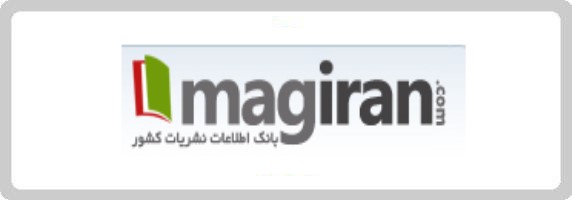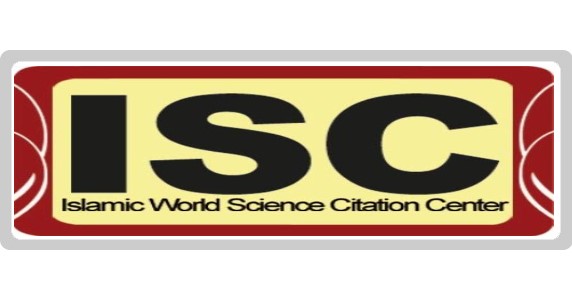An Investigation Into the Effect of In-Service Training of Problem-Solving Skills With Two Approaches: E-Learning and Blended Learning on the Development of Creativity of Educational Managers in Schools in Ray City
Keywords:
blended learning, In-service training, e-learning, creativity, problem-solving skillsAbstract
Purpose: This study aimed to investigate the effect of in-service training of problem-solving skills through two approaches—e-learning and blended learning—on the creativity development of educational managers in Ray city.
Methodology: This quasi-experimental research employed a pretest-posttest control group design. The statistical population included 192 school managers in Ray city, from which 60 participants with average Torrance Creativity scores were purposefully selected and randomly assigned to experimental and control groups. The experimental group received eight sessions of problem-solving training via blended learning, while the control group received the same content through e-learning. The Torrance Standard Creativity Questionnaire was used for data collection. Data were analyzed using multivariate covariance analysis (MANCOVA) in SPSS.
Findings: MANCOVA results indicated a significant difference in overall creativity scores between the two groups (F=38.99, p<0.001), favoring the blended learning group. Significant effects were also found on the creativity subcomponents: originality (F=21.21, p<0.001), fluency (F=28.28, p<0.001), flexibility (F=12.04, p<0.001), and elaboration (F=25.63, p<0.001), all showing greater improvement in the blended learning group.
Conclusion: The results demonstrate that problem-solving training delivered through a blended learning approach is more effective than e-learning alone in enhancing the creativity of educational managers. Combining face-to-face interaction with digital resources appears to significantly support cognitive, emotional, and executive skill development in school leadership.
Downloads
References
Bacigalupo, M. (2021). Entrepreneurship as a competence. In World Encyclopedia of Entrepreneurship. https://doi.org/10.4337/9781839104145.00030
Barak, M. (2013). Impacts of learning inventive problem-solving principles: Students' transition from symmetrical to multi-dimensional thinking. Instructional Science, 41, 989-1007. https://doi.org/10.1007/s11251-012-9250-5
Chaubey, A., & Sahoo, C. K. (2019). Training and development and creativity: Mediating role of social skills in Indian school principals.
Chen, P., & Chang, Y. C. (2024). Incorporating creative problem-solving skills to foster sustainability among graduate students in education management. Cleaner Production Letters, 7, 100082. https://doi.org/10.1016/j.clpl.2024.100082
Coşkun, İ., & Demirci, C. (2025). Teachers' opinions on in‑service training programs provided by Ministry of National Education through distance education and suggestions for improvement. Journal of Educational Technology and Online Learning, 8(2), 251-280. https://doi.org/10.31681/jetol.1645562
Daher, W., & Awawdeh Shahbari, J. (2020). Design of STEM activities: Experiences and perceptions of Prospective Secondary School Teachers. In. https://www.researchgate.net/publication/339517175_Design_of_STEM_Activities_Experiences_and_Perceptions_of_Prospective_Secondary_School_Teachers
Ferrari, A. (2013). DIGCOMP: A framework for developing and understanding digital competence in Europe. https://publications.jrc.ec.europa.eu/repository/handle/JRC83167
González-Pérez, L. I., & Ramírez‑Montoya, M. S. (2022). Components of Education 4.0 in 21st Century Skills Frameworks. Sustainability, 14, 1493. https://doi.org/10.3390/su14031493
Isaksen, S. G., Dorval, K. B., & Treffinger, D. J. (2011). Creative Approaches to Problem Solving: A Framework for Innovation and Change. SAGE Publications. https://books.google.com/books/about/Creative_Approaches_to_Problem_Solving.html?id=ebjwenfQkaoC
Kashani‑Vahid, L., Afrooz, G., Shokoohi‑Yekta, M., Kharrazi, K., & Ghobari, B. (2017). Can a creative interpersonal problem-solving program improve creative thinking in gifted elementary students? Thinking Skills and Creativity, 24, 175-185. https://doi.org/10.1016/j.tsc.2017.02.011
Lee, B., & Lee, Y. (2020). A training program focused on problem-solving skills for young adults. Thinking Skills and Creativity, 37, 100692. https://doi.org/10.1016/j.tsc.2020.100692
McCartney, S., & Fu, Y. (2022). The role of HR analytics in creative decision making in schools.
Molnár, G., & Pásztor, A. (2025). Reasoning skills or creativity: Which is more important in complex problem-solving? Thinking Skills and Creativity, 57, 101865. https://doi.org/10.1016/j.tsc.2025.101865
Oppert, M. L., O'Keeffe, V., Bensnes, M. S., Grecu, A. L., & Cropley, D. H. (2023). The value of creativity: A scoping review. Journal of Creativity, 33, 100059. https://doi.org/10.1016/j.yjoc.2023.100059
Partnership for 21st Century, S. (2021). Framework for 21st century learning. https://static.battelleforkids.org/documents/p21/p21_framework_brief.pdf
Pimdee, P., Sukkamart, A., Nantha, C., Kantathanawat, T., & Leekitchwatana, P. (2024). Enhancing Thai student-teacher problem-solving skills and academic achievement through a blended problem-based learning approach in online flipped classrooms. Heliyon, 10, e29172. https://doi.org/10.1016/j.heliyon.2024.e29172
Rachmawati, Y., Suyatno, & Santosa, A. B. (2020). Principal's Managerial Competence in Actualizing a Creative School. Universal Journal of Educational Research, 8(8), 3406-3408. https://doi.org/10.13189/ujer.2020.080814
Reiter‑Palmon, R., Ben, W., & De Vreede, T. (2017). Team creativity and innovation: The effect of group composition, social processes and cognition. In M. D. Mumford & S. Hemlin (Eds.), Handbook of Organizational Creativity (pp. 295-320). Academic Press. https://www.researchgate.net/publication/256455193_Team_creativity_and_innovation_The_effect_of_team_composition_social_processes_and_cognition
van den Hurk, A., Meelissen, M., & van Langen, A. (2019). Interventions in education to prevent STEM pipeline leakage. International Journal of Science Education. https://doi.org/10.1080/09500693.2018.1540897
Van Hooijdonk, M., Mainhard, T., Kroesbergen, E. H., & Van Tartwijk, J. (2023). Creative problem solving in primary school students. Learning and Instruction, 88, 101823. https://doi.org/10.1016/j.learninstruc.2023.101823
Wong, C., & Shih, Y. (2021). Enhance STEM Education by Integrating Product Design with Computer-Aided Design Approaches. Sustainability. https://www.researchgate.net/publication/356618750_Enhance_STEM_Education_by_Integrating_Product_Design_with_Computer-Aided_Design_Approaches
Downloads
Published
Submitted
Revised
Accepted
Issue
Section
License
Copyright (c) 2025 Marjan Masoomifard, Abbas Shayestehfar, Vahideh Alipour, Ziba Nouri (Author)

This work is licensed under a Creative Commons Attribution-NonCommercial 4.0 International License.










